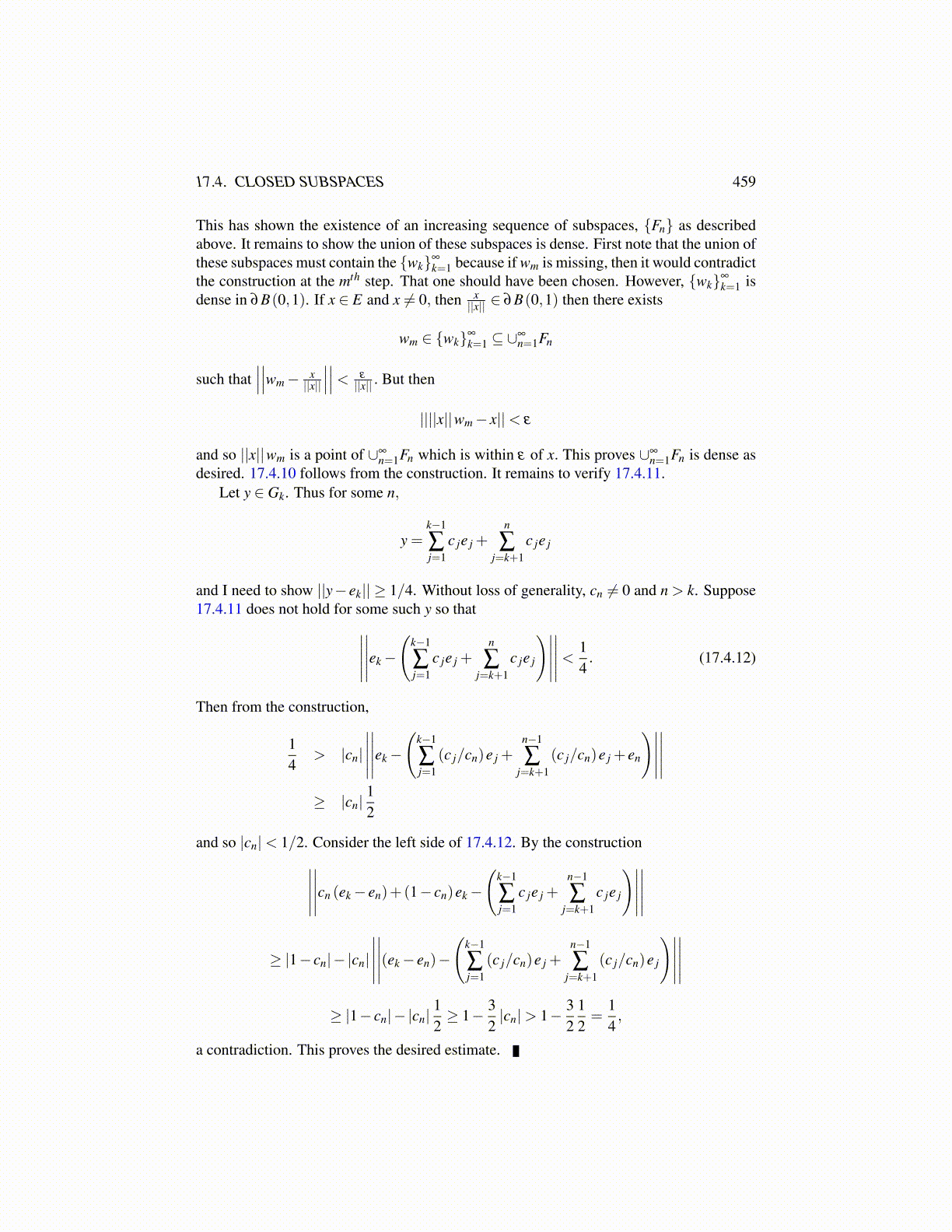
17.4. CLOSED SUBSPACES 459
This has shown the existence of an increasing sequence of subspaces, {Fn} as describedabove. It remains to show the union of these subspaces is dense. First note that the union ofthese subspaces must contain the {wk}∞
k=1 because if wm is missing, then it would contradictthe construction at the mth step. That one should have been chosen. However, {wk}∞
k=1 isdense in ∂B(0,1). If x ∈ E and x ̸= 0, then x
||x|| ∈ ∂B(0,1) then there exists
wm ∈ {wk}∞
k=1 ⊆ ∪∞n=1Fn
such that∣∣∣∣∣∣wm− x
||x||
∣∣∣∣∣∣< ε
||x|| . But then
||||x||wm− x||< ε
and so ||x||wm is a point of ∪∞n=1Fn which is within ε of x. This proves ∪∞
n=1Fn is dense asdesired. 17.4.10 follows from the construction. It remains to verify 17.4.11.
Let y ∈ Gk. Thus for some n,
y =k−1
∑j=1
c je j +n
∑j=k+1
c je j
and I need to show ||y− ek|| ≥ 1/4. Without loss of generality, cn ̸= 0 and n > k. Suppose17.4.11 does not hold for some such y so that∣∣∣∣∣
∣∣∣∣∣ek−
(k−1
∑j=1
c je j +n
∑j=k+1
c je j
)∣∣∣∣∣∣∣∣∣∣< 1
4. (17.4.12)
Then from the construction,
14
> |cn|
∣∣∣∣∣∣∣∣∣∣ek−
(k−1
∑j=1
(c j/cn)e j +n−1
∑j=k+1
(c j/cn)e j + en
)∣∣∣∣∣∣∣∣∣∣
≥ |cn|12
and so |cn|< 1/2. Consider the left side of 17.4.12. By the construction∣∣∣∣∣∣∣∣∣∣cn (ek− en)+(1− cn)ek−
(k−1
∑j=1
c je j +n−1
∑j=k+1
c je j
)∣∣∣∣∣∣∣∣∣∣
≥ |1− cn|− |cn|
∣∣∣∣∣∣∣∣∣∣(ek− en)−
(k−1
∑j=1
(c j/cn)e j +n−1
∑j=k+1
(c j/cn)e j
)∣∣∣∣∣∣∣∣∣∣
≥ |1− cn|− |cn|12≥ 1− 3
2|cn|> 1− 3
212=
14,
a contradiction. This proves the desired estimate.